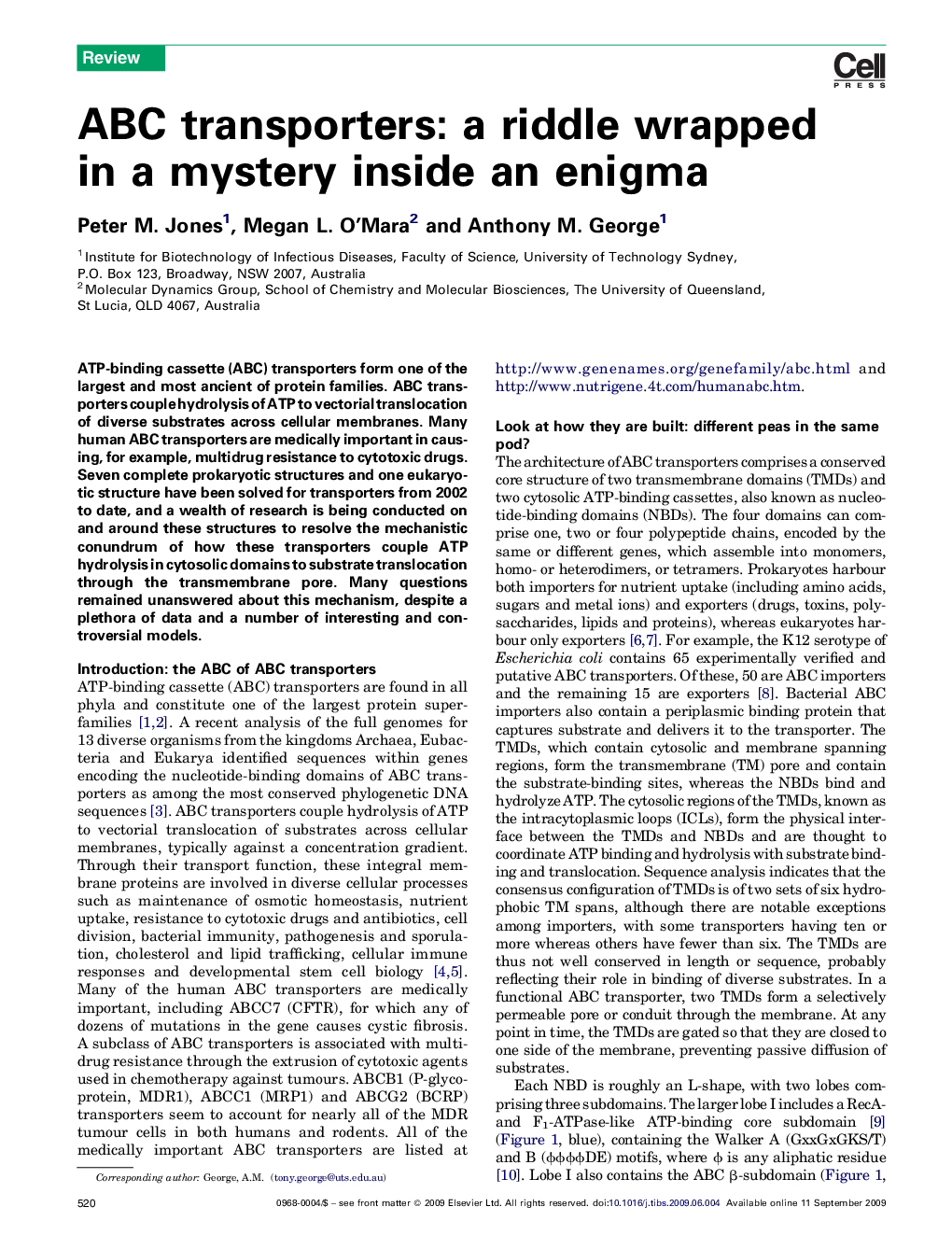| Article ID | Journal | Published Year | Pages | File Type |
|---|---|---|---|---|
| 2031163 | Trends in Biochemical Sciences | 2009 | 12 Pages |
ATP-binding cassette (ABC) transporters form one of the largest and most ancient of protein families. ABC transporters couple hydrolysis of ATP to vectorial translocation of diverse substrates across cellular membranes. Many human ABC transporters are medically important in causing, for example, multidrug resistance to cytotoxic drugs. Seven complete prokaryotic structures and one eukaryotic structure have been solved for transporters from 2002 to date, and a wealth of research is being conducted on and around these structures to resolve the mechanistic conundrum of how these transporters couple ATP hydrolysis in cytosolic domains to substrate translocation through the transmembrane pore. Many questions remained unanswered about this mechanism, despite a plethora of data and a number of interesting and controversial models.
